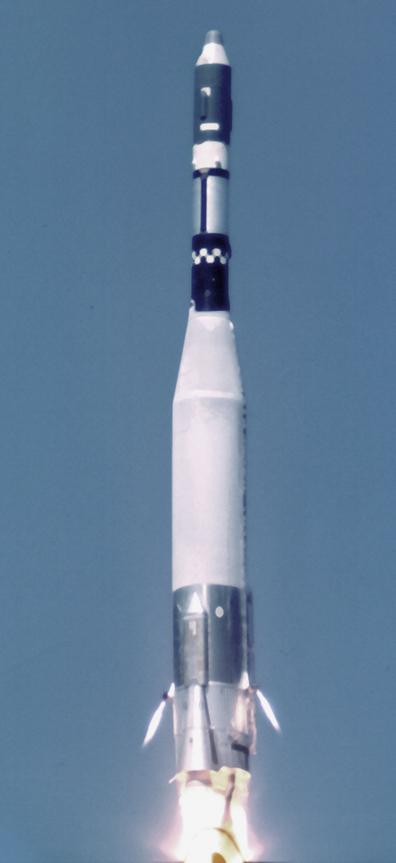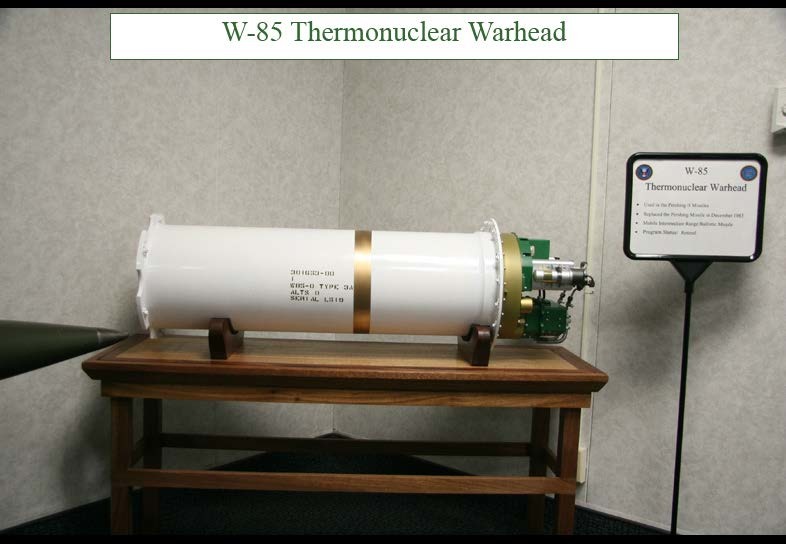|
Dunai Radar
Dunay radar ( rus, Дунай, Dunay literally Danube; NATO: Cat House, Dog House) was a system of two Soviet radars used to detect American ballistic missiles fired at Moscow. They were part of the A-35 anti-ballistic missile system. One sector of one of the radars, the Dunay-3U ("Cat House") is still operational and is run by the Russian Aerospace Defence Forces as part of the Main Control Centre of Outer Space. Dunay-2 The Dunay-2 was a prototype built in Sary Shagan as part of the experimental missile defence system "A". It consisted of separate transmitter and receiver complexes separated by . The power of the radar was 100 kW and its range was . The NATO codename was "Hen Roost". Dunay-3M The Dunay-3 ( rus, Дунай-3М, Dunay-3M; NATO: Dog House) was an upgrade of the Dunay-2 located in Kubinka, Moscow and became operational in 1968. Following an extensive upgrade in 1978 it was renamed Dunay-3M as part of the upgraded A-35M ABM system. It consisted of s ... [...More Info...] [...Related Items...] OR: [Wikipedia] [Google] [Baidu] |
KH-7
BYEMAN codenamed GAMBIT, the KH-7 (Air Force Program 206) was a reconnaissance satellite used by the United States from July 1963 to June 1967. Like the older CORONA system, it acquired imagery intelligence by taking photographs and returning the undeveloped film to earth. It achieved a typical ground-resolution of to . Though most of the imagery from the KH-7 satellites was declassified in 2002, details of the satellite program (and the satellite's construction) remained classified until 2011. In its summary report following the conclusion of the program, the National Reconnaissance Office concluded that the GAMBIT program was considered highly successful in that it produced the first high-resolution satellite photography, 69.4% of the images having a resolution under ; its record of successful launches, orbits, and recoveries far surpassed the records of earlier systems; and it advanced the state of the art to the point where follow-on larger systems could be developed and ... [...More Info...] [...Related Items...] OR: [Wikipedia] [Google] [Baidu] |
Command And Control
Command and control (abbr. C2) is a "set of organizational and technical attributes and processes ... hatemploys human, physical, and information resources to solve problems and accomplish missions" to achieve the goals of an organization or enterprise, according to a 2015 definition by military scientists Marius Vassiliou, David S. Alberts, and Jonathan R. Agre. The term often refers to a military system. Versions of the United States Army ''Field Manual 3-0'' circulated circa 1999 define C2 in a military organization as the exercise of authority and direction by a properly designated commanding officer over assigned and attached forces in the accomplishment of a mission. A 1988 NATO definition is that command and control is the exercise of authority and direction by a properly designated individual over assigned resources in the accomplishment of a common goal. An Australian Defence Force definition, similar to that of NATO, emphasises that C2 is the system empowering des ... [...More Info...] [...Related Items...] OR: [Wikipedia] [Google] [Baidu] |
Missile Defense
Missile defense is a system, weapon, or technology involved in the detection, tracking, interception, and also the destruction of attacking missiles. Conceived as a defense against nuclear-armed intercontinental ballistic missiles (ICBMs), its application has broadened to include shorter-ranged non-nuclear tactical and theater missiles. China, France, India, Iran, Israel, Italy, Russia, Taiwan, the United Kingdom and the United States have all developed such air defense systems. Missile defense categories Missile defense can be divided into categories based on various characteristics: type/range of missile intercepted, the trajectory phase where the intercept occurs, and whether intercepted inside or outside the Earth's atmosphere: Type/range of missile intercepted These types/ranges include strategic, theater and tactical. Each entails unique requirements for intercept, and a defensive system capable of intercepting one missile type frequently cannot intercept others. H ... [...More Info...] [...Related Items...] OR: [Wikipedia] [Google] [Baidu] |
Russian And Soviet Military Radars
Russian(s) refers to anything related to Russia, including: *Russians (, ''russkiye''), an ethnic group of the East Slavic peoples, primarily living in Russia and neighboring countries *Rossiyane (), Russian language term for all citizens and people of Russia, regardless of ethnicity *Russophone, Russian-speaking person (, ''russkogovoryashchy'', ''russkoyazychny'') *Russian language, the most widely spoken of the Slavic languages *Russian alphabet *Russian cuisine *Russian culture *Russian studies Russian may also refer to: *Russian dressing *''The Russians'', a book by Hedrick Smith *Russian (comics), fictional Marvel Comics supervillain from ''The Punisher'' series *Russian (solitaire), a card game * "Russians" (song), from the album ''The Dream of the Blue Turtles'' by Sting *"Russian", from the album ''Tubular Bells 2003'' by Mike Oldfield *"Russian", from the album '' '' by Caravan Palace *Nik Russian, the perpetrator of a con committed in 2002 *The South African name for a ... [...More Info...] [...Related Items...] OR: [Wikipedia] [Google] [Baidu] |
Chirp
A chirp is a signal in which the frequency increases (''up-chirp'') or decreases (''down-chirp'') with time. In some sources, the term ''chirp'' is used interchangeably with sweep signal. It is commonly applied to sonar, radar, and laser systems, and to other applications, such as in spread-spectrum communications (see chirp spread spectrum). This signal type is biologically inspired and occurs as a phenomenon due to dispersion (a non-linear dependence between frequency and the propagation speed of the wave components). It is usually compensated for by using a matched filter, which can be part of the propagation channel. Depending on the specific performance measure, however, there are better techniques both for radar and communication. Since it was used in radar and space, it has been adopted also for communication standards. For automotive radar applications, it is usually called linear frequency modulated waveform (LFMW). In spread-spectrum usage, surface acoustic wave (SAW) ... [...More Info...] [...Related Items...] OR: [Wikipedia] [Google] [Baidu] |
Waveguide
A waveguide is a structure that guides waves, such as electromagnetic waves or sound, with minimal loss of energy by restricting the transmission of energy to one direction. Without the physical constraint of a waveguide, wave intensities decrease according to the inverse square law as they expand into three-dimensional space. There are different types of waveguides for different types of waves. The original and most common meaningInstitute of Electrical and Electronics Engineers, “The IEEE standard dictionary of electrical and electronics terms”; 6th ed. New York, N.Y., Institute of Electrical and Electronics Engineers, c1997. IEEE Std 100-1996. d. Standards Coordinating Committee 10, Terms and Definitions; Jane Radatz, (chair)/ref> is a hollow conductive metal pipe used to carry high frequency radio waves, particularly microwaves. Dielectric waveguides are used at higher radio frequencies, and transparent dielectric waveguides and optical fibers serve as waveguides f ... [...More Info...] [...Related Items...] OR: [Wikipedia] [Google] [Baidu] |
Dnepr Radar
Dnepr may refer to: *Dnieper, a river flowing through Russia, Belarus and Ukraine to the Black Sea *Dnepr (motorcycle), a Ukraininan motocycle brand *Dnepr (rocket), a 1999 space launch vehicle *Dnepr radar, Soviet space surveillance and early warning radar See also *Dnieper (other) Dnieper is a major river, rising in Russia and flowing through Belarus and Ukraine to the Black Sea. Dnieper may also refer to: * Dnieper Ukraine, usually referring territory on either side of the middle course of the Dnieper River * Battle of t ... * Dnipro (other) {{disambiguation ... [...More Info...] [...Related Items...] OR: [Wikipedia] [Google] [Baidu] |
Daryal Radar
The Daryal-type radar () (NATO: Pechora) is a Soviet bistatic early-warning radar. It consists of two separate large active phased-array antennas separated by around to . The transmitter array is and the receiver is in size. The system is a VHF system operating at a wavelength of 1.5 to 2 meters (150 to 200 MHz). Its initial transmit capacity was 50 MW with a target capacity of 350 MW. The designer of the radars, RTI Mints, says that each Daryal receiver is 100 × 100m and has 4,000 cross dipoles. Each transmitter is 40 × 40m with 1,260 modules, each capable of 300 kW. They say the radar has a range of 6,000 km with targets between 0.1–0.12m. It can track 20 objects at the same time and can cope with four jamming sources. The designer, Viktor Ivantsov, was awarded the title "Hero of Labour" for his work on the Daryal. The first Daryal type radar was an active electronically scanned array built at Olenegorsk in 1977. It was the receiver building only and ... [...More Info...] [...Related Items...] OR: [Wikipedia] [Google] [Baidu] |
Low Earth Orbit
A low Earth orbit (LEO) is an orbit around Earth with a period of 128 minutes or less (making at least 11.25 orbits per day) and an eccentricity less than 0.25. Most of the artificial objects in outer space are in LEO, with an altitude never more than about one-third of the radius of Earth. The term ''LEO region'' is also used for the area of space below an altitude of (about one-third of Earth's radius). Objects in orbits that pass through this zone, even if they have an apogee further out or are sub-orbital, are carefully tracked since they present a collision risk to the many LEO satellites. All crewed space stations to date have been within LEO. From 1968 to 1972, the Apollo program's lunar missions sent humans beyond LEO. Since the end of the Apollo program, no human spaceflights have been beyond LEO. Defining characteristics A wide variety of sources define LEO in terms of altitude. The altitude of an object in an elliptic orbit can vary significantly along the orbit. ... [...More Info...] [...Related Items...] OR: [Wikipedia] [Google] [Baidu] |
Don-2N
The Don-2N radar (, NATO: Pill Box) is a large missile defense and early warning active electronically scanned array radar outside Moscow, and a key part of the Russian A-135 anti-ballistic missile system designed for the defense of the capital against ballistic missiles. Located near Sofrino in Pushkinsky District of Moscow Oblast, it is a quadrangular frustum tall with sides long at the bottom, and long at the top. Each of its four faces has an diameter Super high frequency band radar giving 360 degree coverage. To the right of each circular search and track array, separated by a vertical structure for shielding, is a square antenna array (edge length 10 m) for guiding the interceptor missile by data link. The system is run by an Elbrus-2 () supercomputer. It has a range of 3,700 km for targets the size of a typical ICBM warhead. Under the 1972 Anti-Ballistic Missile Treaty both the United States and the Soviet Union had to designate one area to protect from missile ... [...More Info...] [...Related Items...] OR: [Wikipedia] [Google] [Baidu] |
A-135 Anti-ballistic Missile System
The A-135 (renamed to A-235) (NATO: ABM-4 Gorgon) is a Russian anti-ballistic missile system deployed around Moscow to intercept incoming warheads targeting the city or its surrounding areas. The system was designed in the Soviet Union and entered service in 1995. It is a successor to the previous A-35, and complies with the 1972 Anti-Ballistic Missile Treaty. The system is operated by the 9th Division of Anti-Missile Defence, part of the Air Defence and Missile Defence Command of the Russian Aerospace Defence Forces. History A memo from the archives of Vitalii Leonidovich Kataev, written around 1985, had envisaged that the system "will be completed in 1987 to provide protection from a strike of 1–2 modern and prospective ICBMs and up to 35 Pershing 2-type intermediate-range missiles". The A-135 system attained "alert" (operational) status on February 17, 1995. It is operational although its 51T6 component was deactivated in February 2007. A newer missile (PRS-1M) is expected ... [...More Info...] [...Related Items...] OR: [Wikipedia] [Google] [Baidu] |
Pershing II
The Pershing II Weapon System was a solid-fuel rocket, solid-fueled multistage rocket, two-stage medium-range ballistic missile designed and built by Martin Marietta to replace the Pershing 1a Field Artillery Missile System as the United States Army's primary nuclear-capable theater-level weapon. The U.S. Army replaced the Pershing 1a with the Pershing II Weapon System in 1983, while the German Air Force retained Pershing 1a until all Pershings were eliminated in 1991. The U.S. Army United States Army Aviation and Missile Command, Missile Command (MICOM) managed the development and improvements, while the Field Artillery Branch (United States), Field Artillery Branch deployed the systems and developed tactical doctrine. Development Development began in 1973 for an updated Pershing. The Pershing 1a had a 400 kt warhead, which was greatly over-powered for the Quick Reaction Alert (QRA) tactical role the weapon system filled. Reducing warhead yield, however, required a signific ... [...More Info...] [...Related Items...] OR: [Wikipedia] [Google] [Baidu] |


.jpg)

